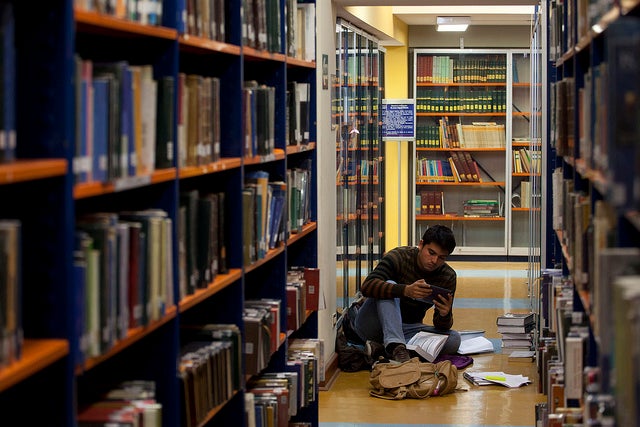
Higher education is available today to more young people in Latin American and the Caribbean (LAC) than at any other time in the region’s history. And while this increased access is a positive development, it does not guarantee the quality education countries need to capitalize on this momentum. Countries need to help students reach their potential by the creation of high-quality, diverse programs that equip them for success in the labor market. Our pursuit of growth and prosperity—and the economic future of the region— depends on it.
A good higher education is not a one-size-fits-all model: it needs to take into account individual interests, motivation, innate talent, and academic readiness. It needs to be equitable, relevant and diverse enough to know that different occupations require varying length of training: indeed, a “short-cycle” two-year program, similar to an American associate’s degree, may be sufficient to train an administrative assistant, while other professions, like engineer or architect, require a full bachelor’s program, which often last upwards of five or six years in the region.
Indeed, the globalized economy requires an increasingly diverse skill set, which is why the new report, “At a Crossroads: Higher Education in Latin America and the Caribbean” is so timely. The report contains in-depth information on the quality, variety and equity of higher education in the region. To be sure, more work is needed to provide quality training so that all students, regardless of their financial situation, are equipped with tools to realize their potential. But I am hopeful that the report—as well as this blog post—will provide a helpful roadmap for policymakers and education experts alike, with suggestions for innovative strategies to improve, and ultimately transform, the region’s higher education systems.
First, an overview:
Higher education in LAC has experienced a staggering expansion since 2000. Between 2000 and 2010, gross enrollment rates doubled—a large and rapid expansion by international standards, mostly fueled by rising high school graduation rates. As higher education enrollment increased, so did supply. In fact, the 2000-2013 period saw the creation of a quarter of the current higher education institutions and half of the current programs.
Access to higher education became more equitable during the expansion. On average, the fraction of students coming from the poorest 50 percent of the population rose from 16 to 25 percent between 2000 and 2013. As equity increased, so did diversity: new programs and institutions opened their doors, many of them private, and more non-university institutions, which often teach short-cycle programs, became available. The expansion, therefore, gave rise to a “new” student who comes from a low-income family and is typically under-represented in higher education.This student went to low-quality primary and secondary schools and is poorly prepared academically for higher education.
But despite progress, the region still suffers from a deficit in equity, variety, and— most significantly— quality. Access is still unequal, as evidenced by the fact that the poorest 50 percent of the population accounts for only 25 percent of all higher education students. And much of the access gap between high- and low-income students is due to disparities that arise before higher education. But while the variety of higher education options has improved, the region still suffers from insufficient diversity by field of study, with high numbers of graduates in education, business, social sciences, and law, but very few in the sciences.
Measuring education quality is difficult, but graduation rates are a troubling indication that some things aren’t working: less than half of all young people ho started higher education coursework graduate by the time they are 25-29. This graduation rate, at just 46 percent, is lower than that in the US (67 percent) but, more worrying, it is even lower for the “new” student.
Similarly, though higher education graduates earn about twice as much as high school graduates, our report finds that these returns aren’t consistent across fields of study, programs and institutions. The “new” student, once again, is reaping the lowest financial returns. Sometimes, those returns are negative since they are faced with programs costs despite significant funding for higher education throughout the region.
Aspiring for better results
Over the past few months, I have traveled extensively throughout LAC to disseminate the findings of this study. I have talked with policymakers, faculty, students, business and industry representatives, and have seen that people throughout the region want—and even demand—more from their institutions of higher education.
But wanting a different outcome means pursuing a different strategy, even in the face of less favorable conditions such as sluggish economic growth and tighter fiscal budgets. As a result, several policy principles could prove useful when designing the region’s new strategies.
Information about program quality needs to be collected and disseminated. A student considering a bachelor’s in business administration at a particular institution, for example, needs to know the program’s graduation rates, the employability of graduates, their average income, and finally, program cost. She also needs to know whether she is academically ready for that program. During my extensive travels, I heard time and again about the need to provide this information early on, so that high school students don’t enroll in programs for which they are ill-prepared and where they will not succeed. Moreover, society at large would benefit from knowing which institutions receive students with poor preparation and, nevertheless, prepare them to succeed in the labor market.
Students need choice. Students should be able to choose from multiple institutions and programs to prevent them from becoming captives of a narrow market. In designing student funding systems, policymakers must note that free or highly subsidized college tends to benefit middle- and high-income students the most, since they are most likely to graduate by being most academically ready for higher education. For low-income students, however, even free tuition is often insufficient, since they often need to work and cannot afford other expenses such as housing, transportation and materials. In trying to provide equitable higher education access, policymakers need to decide which students deserve priority, given the realities of tight budgets.
Higher institutions require monitoring and oversight. Institutions that receive large amounts of public funding or that educate large numbers of “new” students need to be held accountable for the product they are selling which, in this case, is a higher education diploma. During my travels, I often heard about the need for oversight that focuses on outcomes, such as graduates’ employability. All institutions, public and private, need to be transparent and the information should be made readily available.
As policymakers look to expand access and, ultimately, the quality of their young people’s higher education, it is clear that new and innovative strategies are needed. At stake is the future of LAC’s youth and, ultimately, of the region itself.
Find out more about World Bank Group Education on our website and o n Twitter.
See our resources on higher education.
Watch a recording of a panel discussion on higher education in LAC.


Join the Conversation